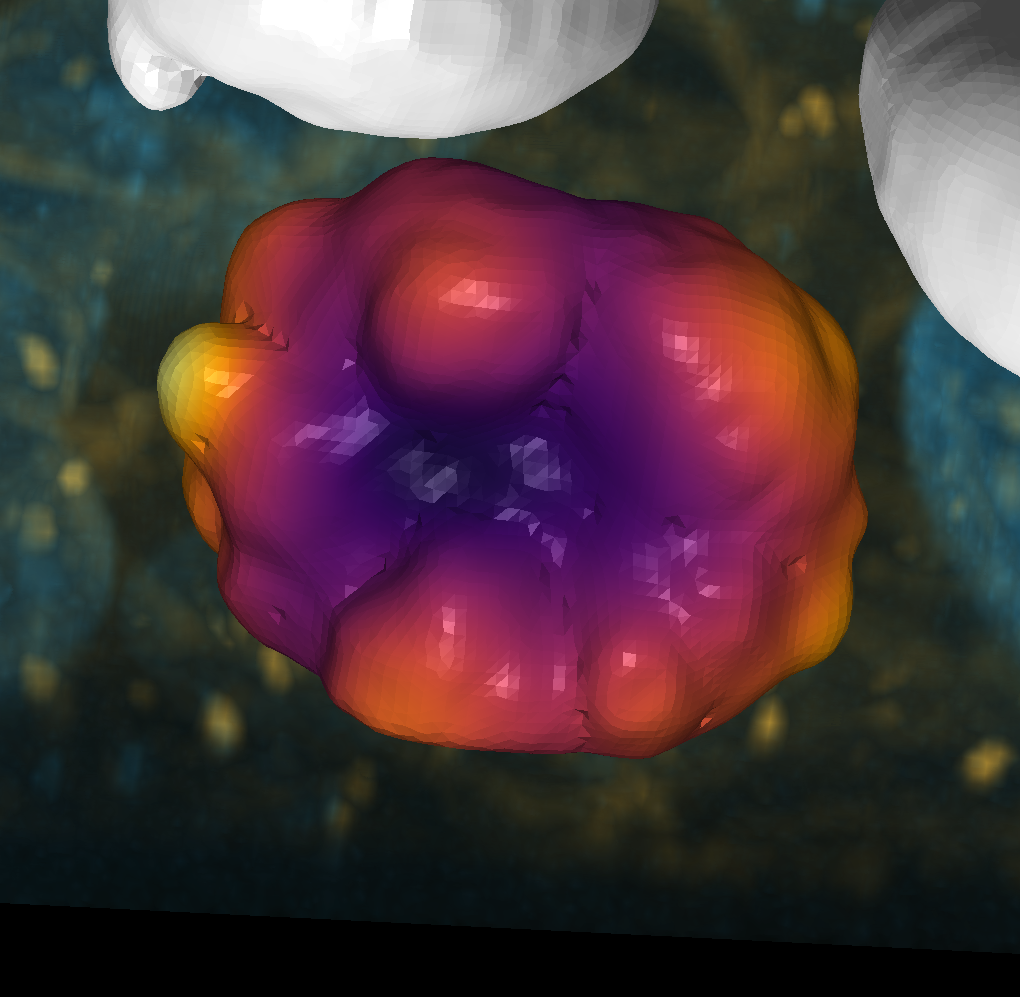Spectral module#
- class napari_shape_odyssey.spectral.LBOIntensityExpander(normalize: bool = False, order: int = 1000)#
Expand intensities on the vertices of a surface in a Laplace-Beltrami basis.
- Parameters
normalize (bool) – Whether to normalize the input intensity array.
order (int) – The order of the expansion.
- coefficients_#
The expansion coefficients.
- Type
np.ndarray
- eigenvectors#
The eigenvectors of the Laplace-Beltrami operator.
- Type
np.ndarray
- eigenvalues#
The eigenvalues of the Laplace-Beltrami operator.
- Type
np.ndarray
See also
If you use this functionality in your work, please cite:
- [0] Mazloom-Farsibaf, Hanieh, et al. “Cellular harmonics for the
morphology-invariant analysis of molecular organization at the cell surface.” Nature Computational Science 3.9 (2023): 777-788.
- characterize_contributions_per_level(normalize_eigenvalues: bool = True)#
Characterize the contribution of each level to the expansion.
the characterizations include the mean and standard deviation of the difference between the expanded intensity and the input intensity per level. Moreover, the energy of the expansion per level is calculated.
- Parameters
normalize_eigenvalues (bool) – Whether to normalize the eigenvalues by the slope of a linear fit. Setting this to True will make the energy per level scale-invariant.
- Returns
df – A dataframe with the characterizations per level.
- Return type
pd.DataFrame
- expand() napari.types.SurfaceData#
Expand the intensity array to the vertices of the surface.
- Parameters
None (None) –
- Returns
expanded_intensity – The expanded intensity array is stored as the value of the surface tuple.
- Return type
‘napari.types.SurfaceData’
- fit(surface: napari.types.SurfaceData)#
Fit the expansion coefficients to the surface.
- Parameters
surface (napari.types.SurfaceData) – A napari surface tuple.
- Returns
None – The coefficients are stored in self.coefficients_.
- Return type
None
- fit_expand(surface: napari.types.SurfaceData) napari.types.SurfaceData#
Fit the expansion coefficients to the surface and expand the intensity array to the vertices of the surface.
- Parameters
surface (napari.types.SurfaceData) – A napari surface tuple.
- Returns
expanded_intensity – The expanded intensity array is stored as the value of the surface tuple.
- Return type
‘napari.types.SurfaceData’
- napari_shape_odyssey.spectral.shape_fingerprint(surface: napari.types.SurfaceData, order: int = 100, robust: bool = False) Tuple#
Compute the shape fingerprint of a surface.
- Parameters
surface (napari.types.SurfaceData) – A napari surface tuple.
order (int, optional) – The order of shape spectrum to caluculate, by default 100
robust (bool, optional) – Use robust laplacian or not, by default False. In essence, if set to true, a smoothed laplacian will be used which is numerically more stable, but smoothes out geometry.
See also
- Returns
eigenvectors (np.ndarray) – The eigenvectors of the shape fingerprint.
eigenvalues (np.ndarray) – The eigenvalues of the shape fingerprint.
